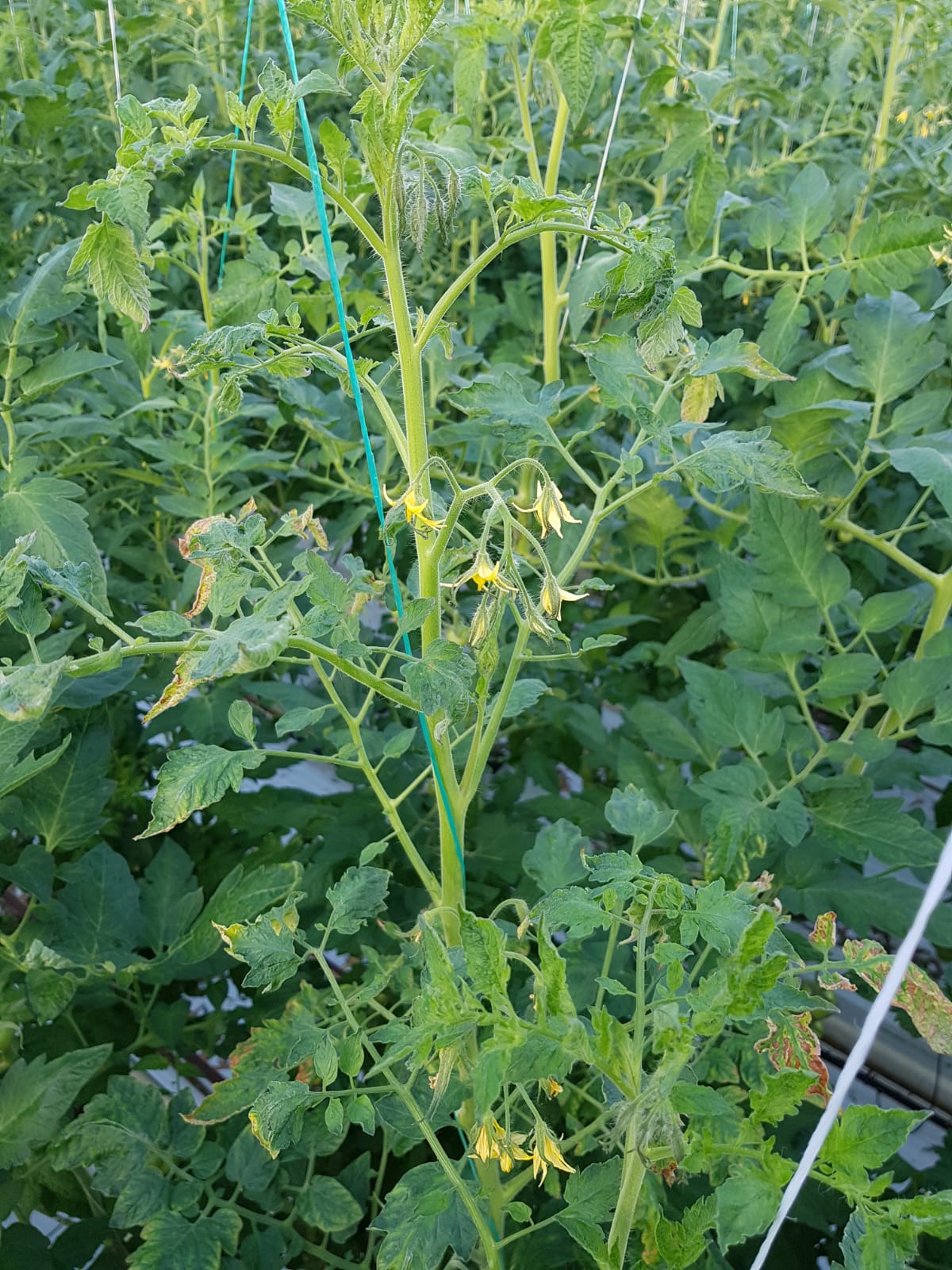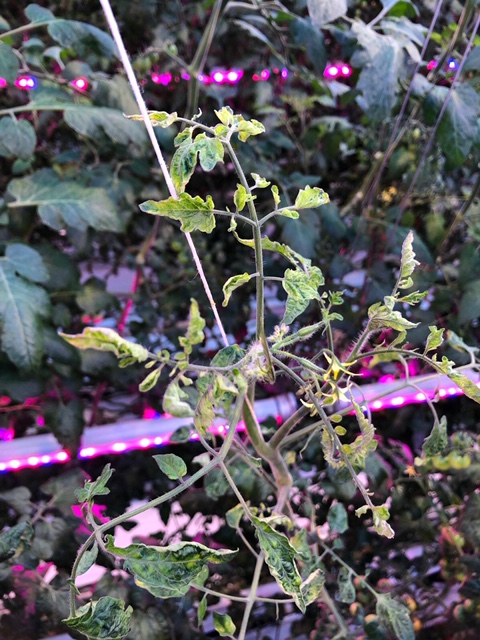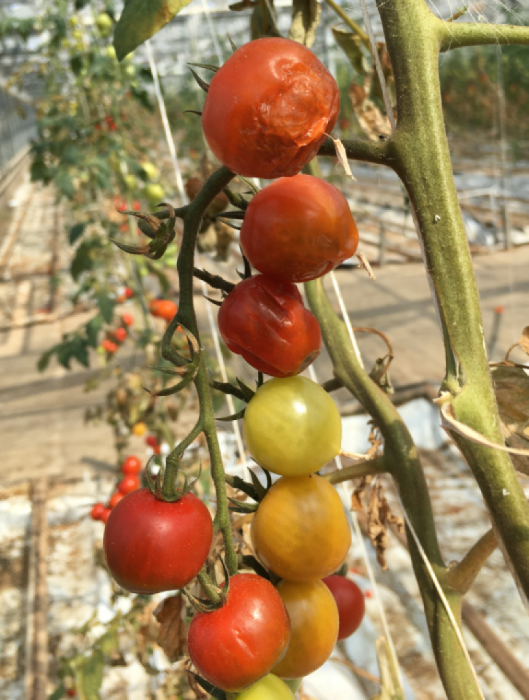Please click here to access the main AHDB website and other sectors.
- Home
- Knowledge library
- UK growers' experiences of a ToBRFV outbreak
UK growers' experiences of a ToBRFV outbreak
Three case studies were carried out with UK growers who have had a ToBRFV outbreak on their sites. Read a summary of the findings below.
Please note that this information will not be updated beyond 2023
Read more about tomato brown rugose fruit virus
AHDB commissioned three case studies with UK growers who have had a ToBRFV outbreak on their sites, to explore their first hand experience, including how the virus was found and reported, the symptoms that were observed, pattern of spread and how the outbreak was managed. The goal of these case studies was to allow us to build on our understanding of the virus, continue to develop best practice guidance for it's management and make recommendations for future ToBRFV research and surveillance activity.
Grower site one
Infection was confirmed after samples were sent to the Plant Health and Seed Inspectorate (PHSI) and a diagnostic laboratory outside the UK.
Symptoms started to develop soon after arrival on site in only one of the three varieties planted (classic cherry tomato) and included deformed, twisted nettled heads and needle-like leaves. The symptom distribution and progression indicate the entire crop was infected at the same time and it is possible that the recirculating irrigation system may have contributed to virus spread.
All the plants from the block (with and without symptoms) were removed before fruit set to prevent further infection. Before site disinfection, infected material was disposed of via landfill. No outbreaks developed in the subsequent crop and the site was declared free from ToBRFV in June 2020.

Symptoms of ToBRFV on tomato leaves - chlorosis, mottling, necrosis and drooping. Image source anonymous, used with permission.
Grower site two
This outbreak occurred sequentially across two compartments that were under construction and virus spread may have been facilitated by contractors on site. PHSI statutory surveillance confirmed infection in March 2020.
The symptoms occurred in the mature crops and were the same in each compartment. In addition to showing similar symptoms to those observed at site one, they also featured reduced fruit and truss size, fruit abortion and weaker stems with reduced diameter. Two-thirds of the crop was symptomatic by the time the crop was removed. Symptom expression seemed to coincide with the switching on of LEDs.
The infected material was removed on a conveyor system, baled and incinerated on site (granted under an exemption licence). All equipment and site architecture were thoroughly cleaned with Jet 5 (1:125 rate), Unifect G (1:25 rate), followed by fogging with Jet 5 (1:12 rate with 1 litre of Jet 5 per 200 m3 of space) carried out by staff.
Since this outbreak was reported in this case study, grower site 2 has unfortunately experienced a secondary outbreak. For more information on the progression of this outbreak and how it was managed, please read this update.

ToBRFV symptoms - deformed, twisted, nettled heads and leaves. Image source anonymous, used with permission.
Grower site three
At this site, no symptoms were visible before the virus was confirmed by PHSI statutory surveillance.
Subsequent symptoms included leaf lesions and chlorosis, leaf tissue death, lesions on the centre of stems, reduced fruit and truss size, and rugose fruit symptoms, coincided with water stress caused by an irrigation breakdown. These initially developed in patches around the glasshouse, suggesting the infection was not introduced during propagation. A possible route of infection could have been via the import of fruit from Europe to the neighbouring packhouse.
The crop was terminated early with 100% of the crop symptomatic by this stage, and the glasshouse was temporarily closed after the final harvest. Infected material was removed and incinerated on site (granted with an exemption licence). The disinfection protocol was being planned at the time of the case study.

ToBRFV rugose symptoms on fruit exacerbated by irrigation breakdown. Image source anonymous, used with permission.
What did we learn?
These case studies have informed some ToBRFV management best practice guidance which can be read in the full report on the AHDB website. Key points include:
ToBRFV prevention
- Regularly update biosecurity and hygiene protocols, fully train your staff on these, and monitor the implementation of these protocols with all your staff and visitors
- Ensure all staff and essential visitors strictly follow these protocols on site, including appropriate use and disposal of PPE, disinfection of hands and machinery, and prohibiting staff bringing imported food on site
- Restrict access to production areas unless essential and restrict what can be taken in (e.g. mobile phones, watches, jewellery etc). Prohibit movement between the packhouse and glasshouse, and ideally between separate glasshouses/blocks
- Ensure that seed received from suppliers complies with relevant UK / EU/ GSPP (Good Seed and Plant Practices legislation. Test young plants for ToBRFV before dispatch from the propagator and on receipt on the nursery.
Identification and management of ToBRFV
- Ensure staff are trained to continually monitor for and identify ToBRFV symptoms (keep in mind these may not develop consistently or an infected crop could be asymptomatic). Refer to resources to help you identify symptoms including our symptom information and the European and Mediterranean Plant Protection Organisation (EPPO) image gallery
- Maintaining high levels of plant vigour and avoiding stress may delay symptom onset. This should be prioritised where an infection is confirmed but crops are asymptomatic
- Do not wait for PHSI statutory surveillance; if you suspect an outbreak, contact your local inspector or email info@apha.gov.uk / call 0300 1000 313
Clean-up and eradication of ToBRFV on sites
- Carefully remove infected crop debris, and either incinerate on site (with exemption licence), dispose of via deep burial, put through a biodigester or send to landfill. Vacuum production areas after sweeping, jet wash, then disinfect
- Clean all equipment in the infected area before disinfecting, and consider treating irrigation storage areas and water
- Use disinfectants demonstrated to be effective against ToBRFV at their maximum rates and after disinfection, swab and test high-risk areas to confirm eradication. Read more about this on our ToBRFV survival and disinfection page.
ToBRFV case studies presentation
Watch Part one of the Protected vine crops industry highlights webinar to hear Dave Kaye (ADAS RSK) discuss some of the practical learnings taken from the grower case studies. He aligns this with some key findings from his work reviewing the hygiene measures implemented by protected edible growers to prevent pest and disease outbreaks, and the gaps and obstacles to employing best practice.
Useful links
Download the full ToBRFV UK grower outbreak case studies report
Read the update from the grower site 2 outbreak
Read our hygiene best practice and biosecurity guidance for ToBRFV
Find out about the survival and disinfection of ToBRFV
Read about ToBRFV legislation and UK and international outbreaks
Disclaimer
This project was carried out for research and development purposes and examined the individual experiences and actions of growers in response to an outbreak of ToBRFV. AHDB does not endorse or recommend any particular approaches to tackling ToBRFV over any other, but with these case studies intended to illustrate different approaches that have been taken to manage ToBRFV. Insight from these case studies will be taken forward to build on our understanding of the virus, continue to develop best practice guidance for it's management and make recommendations for future ToBRFV research and surveillance activity.
While the Agriculture and Horticulture Development Board seeks to ensure that the information outlined on this page and in the project report is accurate at the time of publishing, no warranty is given in respect thereof and, to the maximum extent permitted by law the Agriculture and Horticulture Development Board accepts no liability for loss, damage or injury howsoever caused (including that caused by negligence) or suffered directly or indirectly in relation to information and opinions contained in or omitted from this information.
Correct as of June 2021.
Topics:
Sectors:
Tags:

